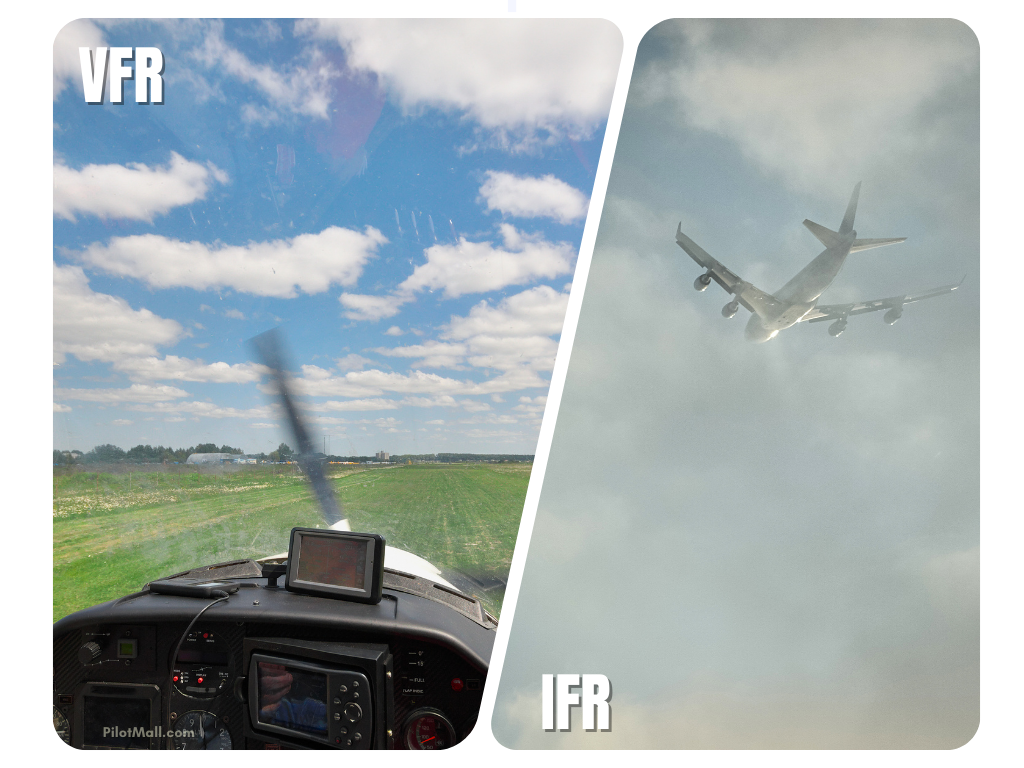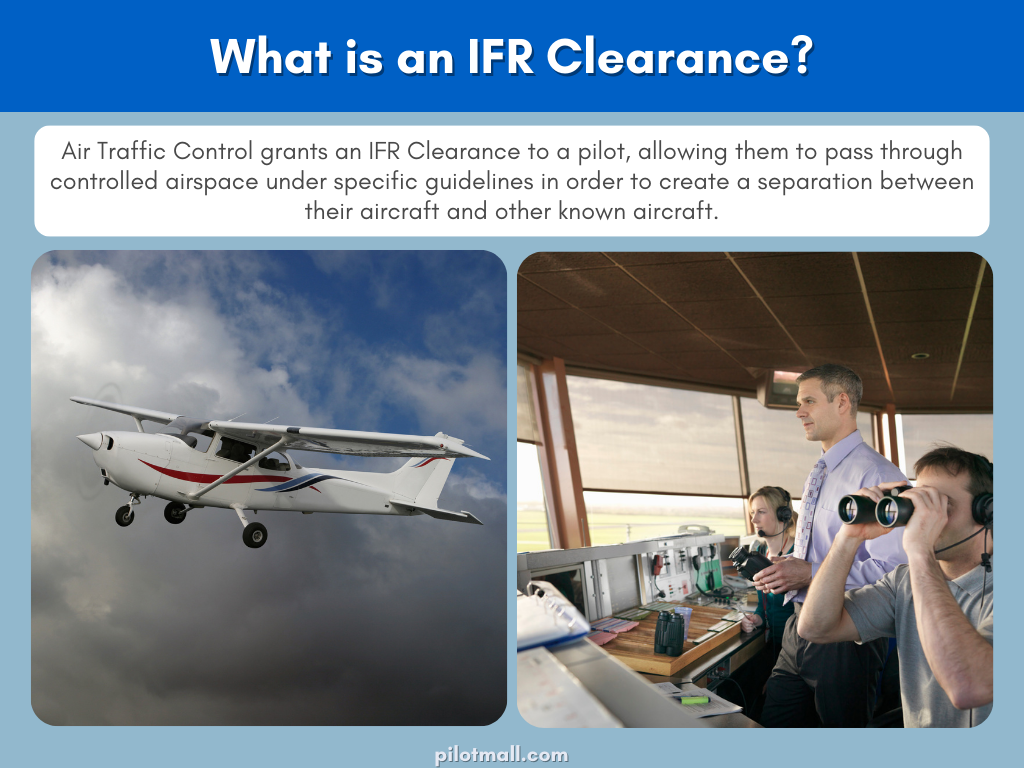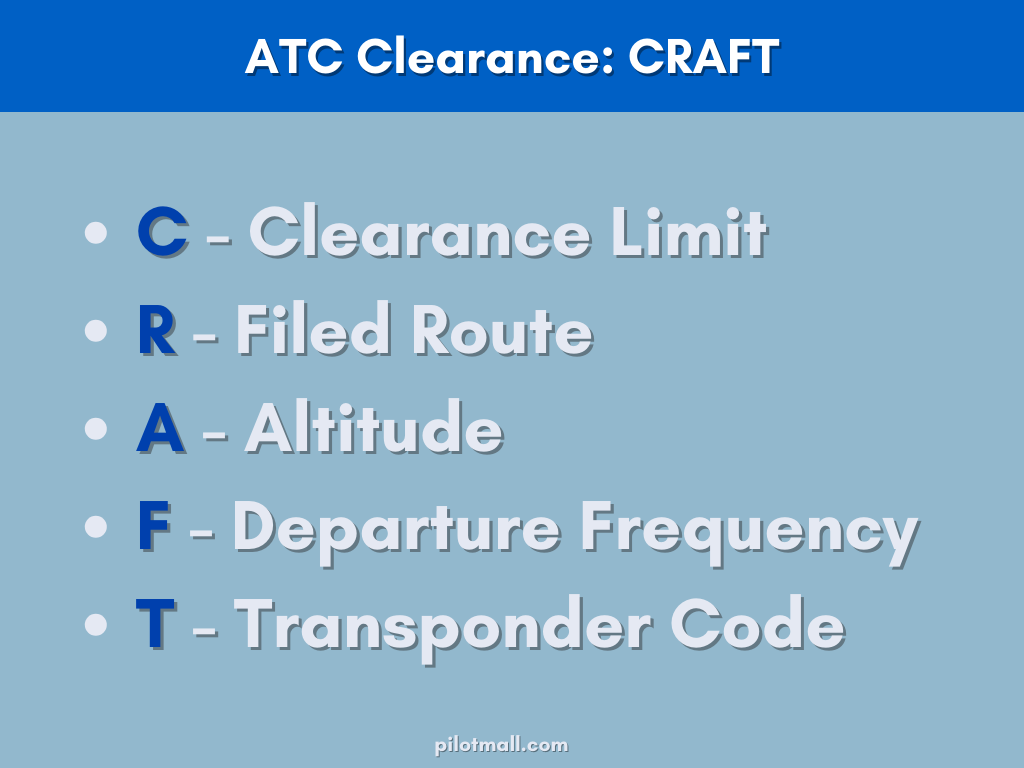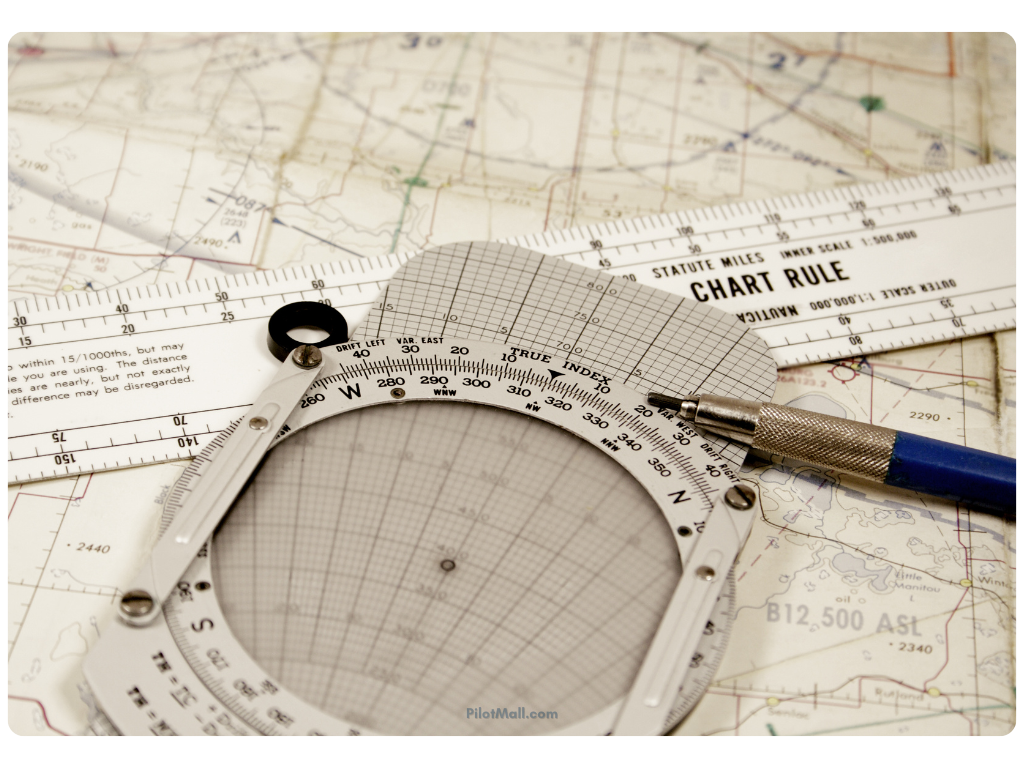IFR Clearance: How To Request & File (Examples / Requirements)
Has the grey sky put a damper on your love of flying? Acing your IFR rating not only makes you an even more skillful pilot, but it also grants you priceless freedom. Of course, there's one area that many IFR learners have trouble with—decoding all those confusing IFR clearances and readbacks!
No problem though, we're here to help!

Featured Pilot Gear
Browse our selection of high-quality pilot supplies! Your purchase directly supports our small business and helps us continue sharing valuable aviation content.
Has the grey sky put a damper on your love of flying? Earning your IFR rating not only makes you a more capable pilot, it also gives you more freedom when weather isn’t ideal. Of course, one area that many IFR learners struggle with is decoding IFR clearances and delivering clean readbacks.
No problem—we’re here to help. In this guide, we’ll show you how to file IFR flight plans and share tips for sounding confident when you read back your clearance to Air Traffic Control.
Let’s jump in!

How is an IFR Flight Plan Different from a VFR Flight Plan?
An IFR (Instrument Flight Rules) flight plan is designed for flights operating under IFR. It helps ATC manage aircraft through controlled airspace using instrument navigation when visibility or weather conditions require it.
IFR flight plans often include ATC-preferred routes, assigned altitudes, and predefined airways that allow controllers to route traffic safely and efficiently.
They also consider equipment requirements—ensuring the aircraft has the navigation and communication capability to operate in instrument meteorological conditions (IMC).
Pilots flying IFR must comply with minimum IFR altitudes and follow altitude assignments and routing instructions issued by ATC.
A VFR (Visual Flight Rules) flight plan is used in clear weather and relies on outside visual references to navigate. It usually offers more flexibility in route and altitude selection, though VFR pilots still must follow airspace rules for their area of operation.

What is an IFR Clearance?
An IFR clearance is ATC authorization for a pilot to operate in controlled airspace under IFR, using specific routing and altitude instructions to help maintain separation from other aircraft.
How to get an IFR clearance
Before taxiing, contact ATC on Clearance Delivery (or Ground Control at airports that combine frequencies). This is the first step toward receiving your clearance.
When contacting ATC, be ready to provide: aircraft call sign, type and equipment suffix, departure and destination, proposed departure time, and (if known) requested altitude and route.
Getting a clearance in the air: While it isn’t ideal, you can depart VFR and request an IFR clearance once airborne. Only do this if weather and terrain are safe and you do not require an IFR clearance to depart.

Use CRAFT to Write Down Your ATC Clearance
When ATC issues an IFR clearance, there’s a standard format many pilots use to copy it down: CRAFT. Write “CRAFT” down the page on a kneeboard (or use ForeFlight’s scratchpad) and fill it in as ATC speaks.
- C — Clearance limit: Usually your destination airport
- R — Route: The route you’ll fly (often “as filed”)
- A — Altitude: Initial “climb and maintain” plus expected altitude
- F — Frequency: Departure frequency
- T — Transponder: Squawk code
Common abbreviations for copying your IFR clearance
Controllers deliver clearances quickly. Abbreviations help you write faster and reduce mistakes. If you miss something, ask for a repeat—ATC would rather clarify than have a pilot guess.
- AF — As filed
- RV — Radar vectors
- H — Heading
- RH — Runway heading
- R/L — Right/left turn
You can also shorten altitude instructions.
Example: “Climb and maintain 2,000; expect 6,000 in 10 minutes” → 2k / 6k in 10 (or even 2/6 in 10).
Example of an IFR clearance

Predict What ATC Will Say
Fill out parts of CRAFT before you call. If ATC matches what you wrote, just confirm with a check mark and focus on changes.
For example: Clearance limit is usually your destination, route is often “as filed,” and the departure frequency can be taken from charts. That leaves altitude and squawk as the main items to copy carefully.

Studying Your Flight Plan
Before copying down a clearance, you’ll need to build and file your IFR plan. IFR planning requires more forethought than VFR because you’re working inside a structured ATC system.
Key factors to consider:
- Destination: Weather and approach plates (minimums, procedures, arrival details)
- Enroute: Altitudes (MEAs, MRAs, MCAs, OROCAs), airspace, TFRs, terrain, and preferred routes
- Departure: Climb requirements and turns (including obstacle considerations)
- Alternate: Decide whether an alternate is required and plan accordingly
- Fuel: Enough for destination + alternate + 45 minutes at cruise
- Equipment: Ensure you meet FAR 91.205 requirements
- Currency: Stay current per FAR 61.57(c)
- Emergencies: Plan practical outs—divert airports and safer options along the route

IFR Plates
There’s a reason IFR training feels challenging: approach plates and procedures pack in a lot of information. Start by learning chart symbols and conventions, then focus on the data that matters most—minimum altitudes, frequencies, approach courses, missed approach instructions, holding procedures, and restrictions.
Consistent practice builds fluency. The more often you read plates and mentally rehearse the steps, the more confident you’ll be during real instrument procedures.

Filing an IFR Flight Plan
Use an approved flight planning tool or contact Flight Service to submit your route, altitude, and other required details. Review your plan for accuracy and regulatory compliance, and stay alert for amendments or reroutes from ATC prior to departure.
Tools to help you file
Consult the FAA filing guide and related resources:
Traditional ways to file:
- By phone: 1-800-WX-BRIEF (1-800-922-7433)
- Online: 1800wxbrief.com
- See our guide: How to file a flight plan (step-by-step)
Apps pilots use for filing:
- FltPlan.com: A fast, free flight planning option (provided by Garmin).
- ForeFlight: A popular option with powerful planning, filing, and cockpit tools.
FAQ

-
What does “as filed” mean in an IFR clearance?
It means ATC is approving the route you filed in your flight plan without changes (unless other instructions follow).
-
What should I do if I miss part of the clearance?
Ask for a repeat. Say something like, “Say again for [call sign],” or request the specific item you missed (altitude, squawk, frequency, etc.).
-
Can I depart VFR and pick up IFR in the air?
Yes, but only if weather and terrain allow a safe VFR departure and you’re not departing from an airport or situation that requires an IFR clearance before takeoff.
-
What’s the easiest way to copy a clearance quickly?
Use CRAFT and pre-fill what you can (destination, likely “as filed,” and the departure frequency from charts). Then focus on altitude and squawk.
-
Do I always need to file an alternate?
Not always. Alternate requirements depend on forecast conditions around your ETA and applicable regulations. When in doubt, plan conservatively and verify current rules and conditions.
Takeaway
Filing and flying IFR can feel complex at first, but a solid process makes it manageable. Careful attention to regulations, weather, and clear communication with ATC are key to safe and smooth IFR operations.
With a studied route, a prepared CRAFT template, and clean shorthand, you’ll copy clearances faster and read them back with confidence.
Happy flying!
Want to learn more about IFR (Instrument Flight Rules)?
Our guides are designed to help student pilots become professional pilots and help private pilots sharpen their instrument knowledge and skills.
- Lost Comms on IFR Flight (What to do & Procedures to Follow)
- The Complete Guide to Aircraft Instruments [More Than Just the 6-Pack]
- ILS Approach: Instrument Landing Systems Explained
- VFR vs IFR Explained: Differences Between The Flight Rules
- Cloud Ceilings: What Pilots Should Know (Complete Guide)
- Pop-up IFR Clearance: 7 Tips On How To Properly Request One
Did you find this article helpful?
Do you think we missed anything important? Let us know in the comments below!








